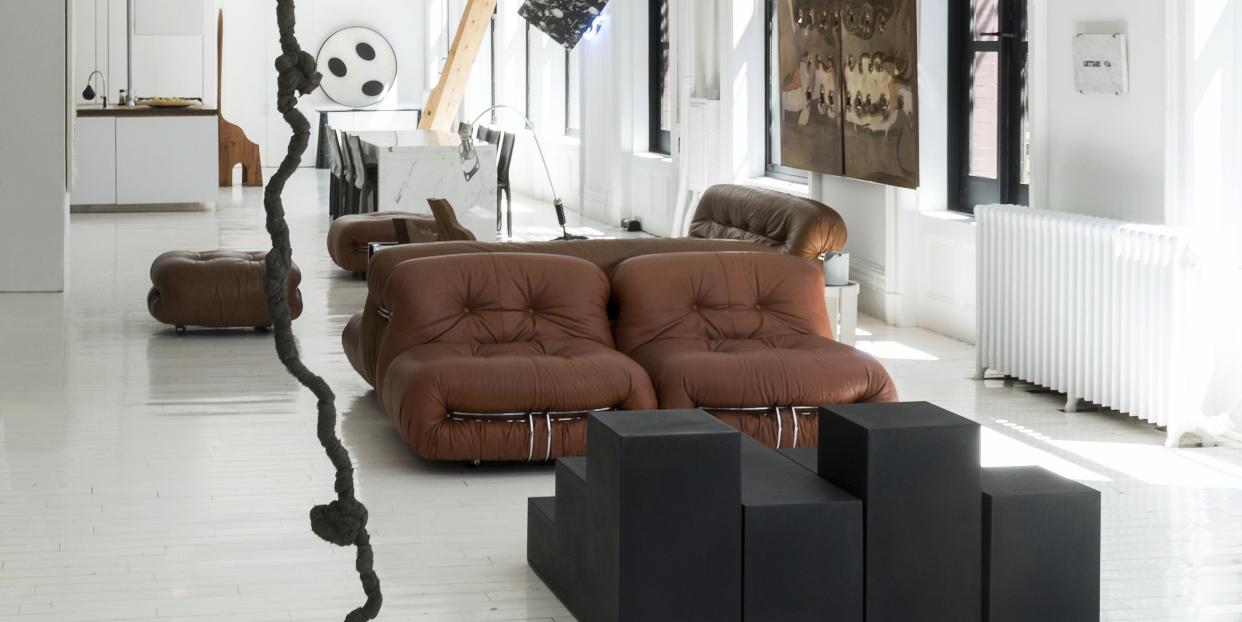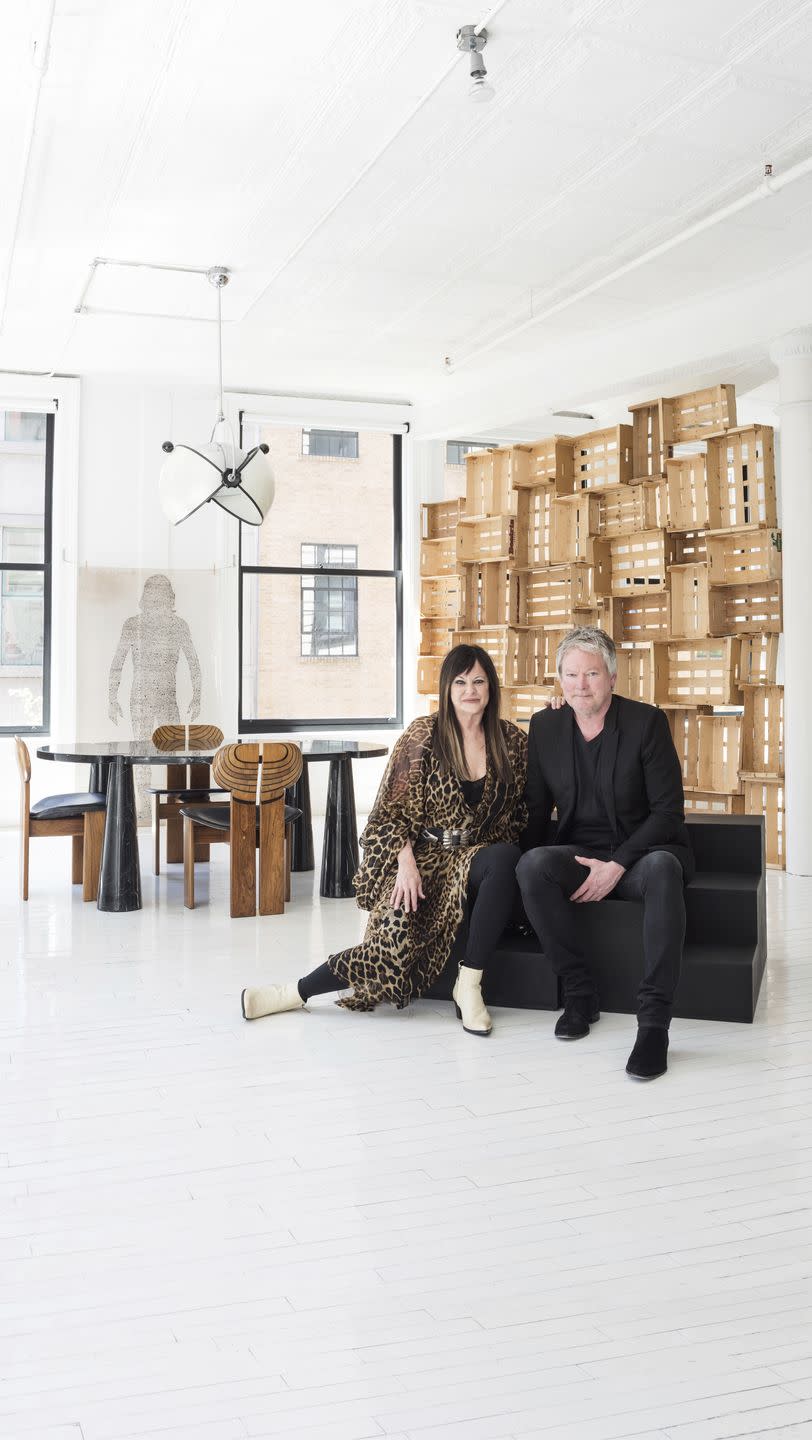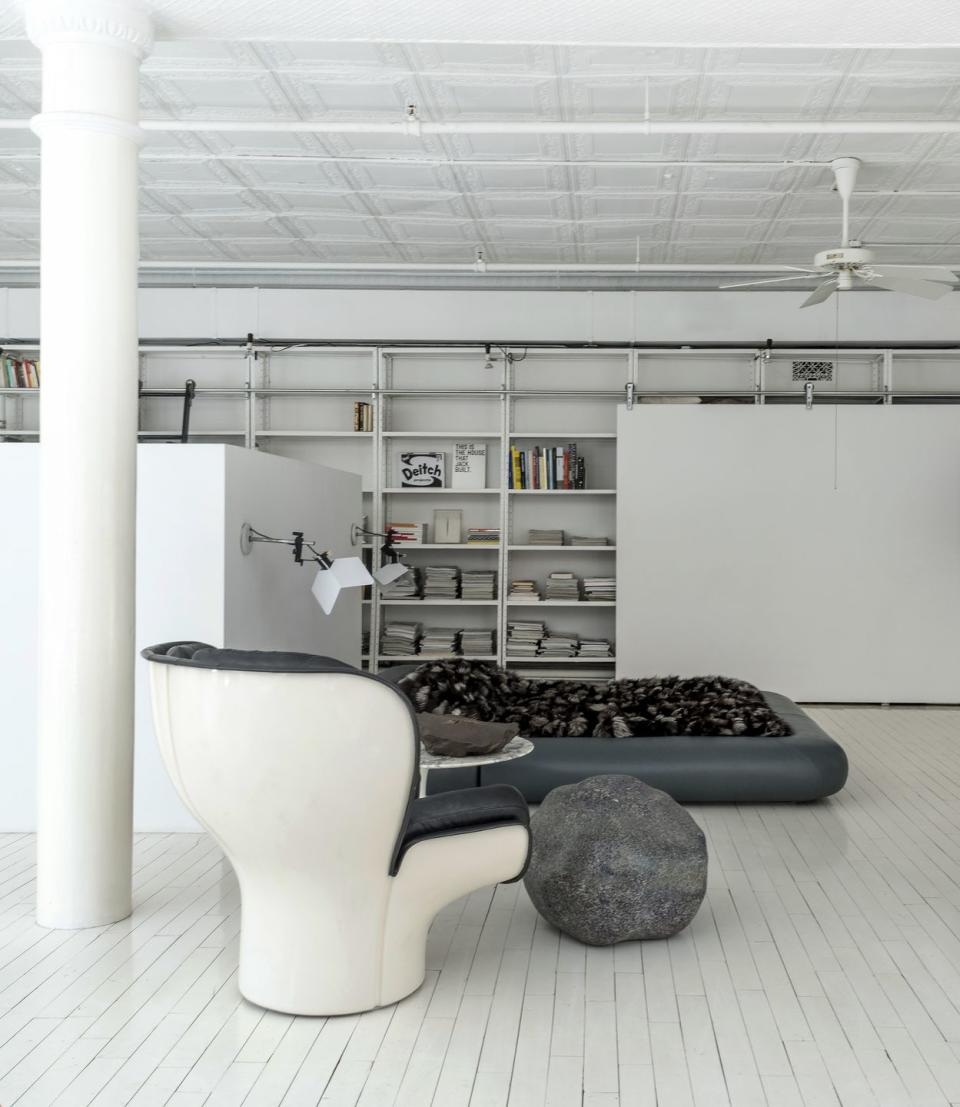An invite to one of James Crump and Ronnie Sassoon’s salons is one of the most sought-after in the New York arts scene. We get you in the door, for a look around their gallery-like home…

Collaborators in life and art, James Crump and Ronnie Sassoon have been spending a lot of time commuting between their apartment in SoHo, downtown New York, and a second home in Connecticut, where they are working on a documentary about the architect and furniture designer Marcel Breuer. ‘He was so prolific,’ says James, ‘but our film, Breuer’s Bohemia, is focused on his residential practice and how it exploded in the early 1950s on the East Coast, and in Connecticut in particular. The area is known for a specific kind of architectural style – there are over 300 modernist homes in New Canaan alone.’
The couple’s own Connecticut abode is, not so coincidentally, a Breuer design. They also have a Richard Neutra house in Los Angeles, while this, their beloved SoHo loft, has its own numerous design pedigrees. It was originally a doll factory and sits above what was once artist Gordon Matta-Clark’s FOOD – part-canteen for the early 1970s bohemian community, part-living artwork. James and Ronnie bought the place from its previous tenant, artist Jack Ceglic, in 2014. It had been largely untouched since Ceglic and his partner Joel Dean, part of the first wave of loft dwellers in the now famous neighbourhood, transformed the space in the 70s.

It had been an immense labour of love. ‘They were extremely poor when they moved in,’ says Ronnie. ‘Ceglic made everything, including all the light fittings. There are fewer hardware stores than there used to be, but there are still lots of little electrical shops – that’s partly why artists lived here, you could buy anything.’ Ceglic created an amazing space-age shower cubicle, and hand carved the cabinets for the kitchen. ‘He also made all the shelves,’ says Ronnie. ‘We kept all of it as is.’ ‘It was squatted in, and then legalised for dwelling by Jack and Joel – much of the famous Dean & Deluca Cookbook was created by them in the same kitchen we use today,’ adds James
That historic kitchen still sees a lot of action. While James and Ronnie like to eat out at a handful of local Italian restaurants, they prefer to host dinners at the loft. ‘One of the reasons why we have this space is so we can entertain,’ explains Ronnie. As well as intimate dinners, the couple also host regular salons. ‘We choose a poet or writer, and then invite 40 or 50 people to come to a reading or performance,’ says Ronnie, who takes charge of cooking for these evenings. ‘It’s casual and fun, and there are usually stragglers here until the wee hours. It’s become kind of a hot ticket.’
This is a highly social home, an office and a gallery, all in one. And what it lacks in terms of a separate guest room (‘only very close friends stay over’, says Sassoon, gesturing at a barely screened-off bed), it makes up for with a white-floored expanse that’s the ideal backdrop for an impressive collection of installation art. James recently completed a documentary, Spit Earth:Who is Jordan Wolfson?, about the divisive artist whose puppet installation was recently at Tate Modern, but the pieces in the couple’s home are less incendiary – significant Arte Povera, as well as 1960s and 70s Italian furniture.

They may appear to be living the downtown Manhattan dream, but creating a home in what is fundamentally an old industrial building has had its challenges. ‘The loft is landmarked,’ explains James, ‘so we had to battle for permission to change the windows. When we moved in, they were the original leaded-glass, but were cracking. It took us two years of working with an architect to get the okay to change them.’ Despite these issues, Ronnie and James are delighted that the provenance of their home is celebrated, and its integrity protected. ‘At one point there was a plan for a freeway to be built through here,’ says James. ‘It was fought by the likes of Donald Judd and other local artists, and it didn’t happen. Nor will it. This 19th-century factoryscape is going to be here for a long time.’
For the full house tour see ELLE Decoration June 2020
Like this article? Sign up to our newsletter to get more articles like this delivered straight to your inbox.
Keep your spirits up and subscribe to ELLE Decoration here, so our magazine is delivered direct to your door.

 Yahoo News
Yahoo News 
